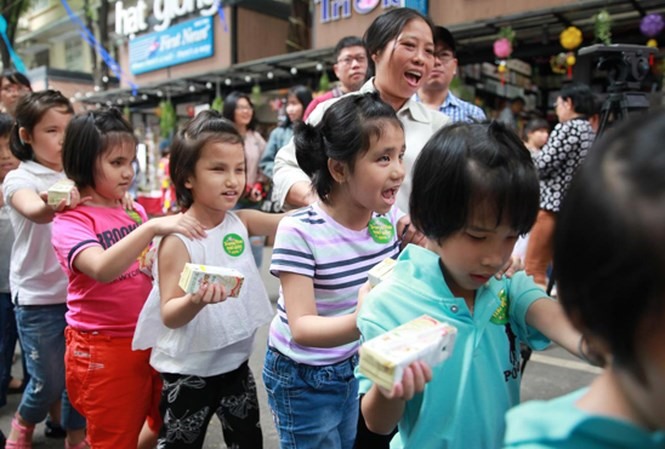 Society
Society

Thousands of children living in Government-run institutions will be placed in family homes under a new project launched yesterday in Hà Nội.
 |
| Thousands of children living in Government-run institutions will be placed in family homes under a new project launched yesterday in Hà Nội. – Photo tienphong.vn |
HÀ NỘI – Thousands of children living in Government-run institutions will be placed in family homes under a new project launched yesterday in Hà Nội.
Việt Nam has about 1.5 million children considered to be living in “special circumstances”, including 170,000 orphaned and homeless children. Child protection facilities are a last resort for children with no alternatives, said Đào Hồng Lan, Deputy Minister of Labour, Invalids and Social Affairs, but do not always facilitate the development of children’s Intelligent Quotient (IQ) and Emotional Intelligence. The new project is based on the understanding that family environments are better for children’s physical and mental growth, she said.
The project will be implemented by the Ministry of Labour, Invalids and Social Affairs (MoLISA) and the non-governmental organisation Care for Children (CFC) over the 12 years. The project’s four phases will begin with a pilot programme in Hà Nội and Thái Nguyên from 2017 to 2020.
“The project aims to diversify the choices of alternative care, bringing the best life to children,” said Robert Glover, the founder and CEO of Care for Children.
Taking care of children in child protection shelters is often expensive, he said. The cost for transferring children from shelters to community care would initially be expensive but would save money later, he said.
At the launching ceremony, Lan said that the country has made progress in the care of children with special circumstances. Alternative forms of child care have been implemented in localities such as Thanh Hóa, Đà Nẵng, Huế, Thái Nguyên and Quảng Ninh over the past four years, she said.
However, efforts to expand community-based care for homeless and orphaned children face a number of challenges. Public awareness of alternative child care options is limited because of this form of care is still new in Việt Nam, where most orphaned children are cared for by other relatives or placed in institutions, Lan said.
Child protection staff at the grassroots level often lacked knowledge and skills to evaluate children and the families who took care of them, she said.
"Through the experience of Việt Nam as well as other countries in the world, we know that alternative forms of care for children by individuals, relatives or unrelated but loving families is the best way to protect the best interests of children," Deputy Minister Lan said.
Expanding alternative care is one of the important goals in the implementation of child protection, and a part of the national target program to ensure children with special circumstances and those who don’t live with their parents can live in a family environment. Though the pilot project on alternative care is a good starting point, Lan emphasised the need to find the best way to expand nation-wide.
She requested the Department of Children and Department of Labour, Invalids and Social Affairs closely collaborate with local staff as the pilot is implemented to help them become more professional. — VNS




